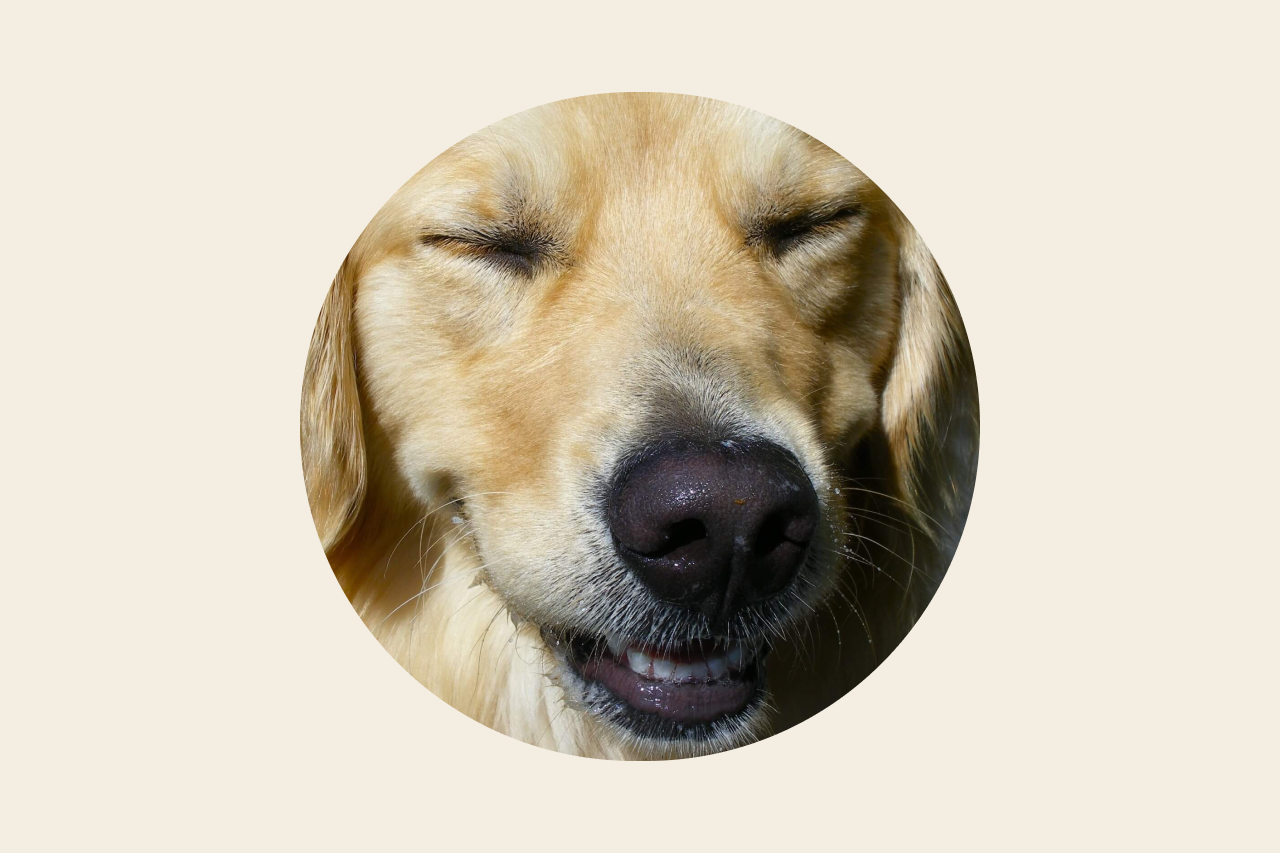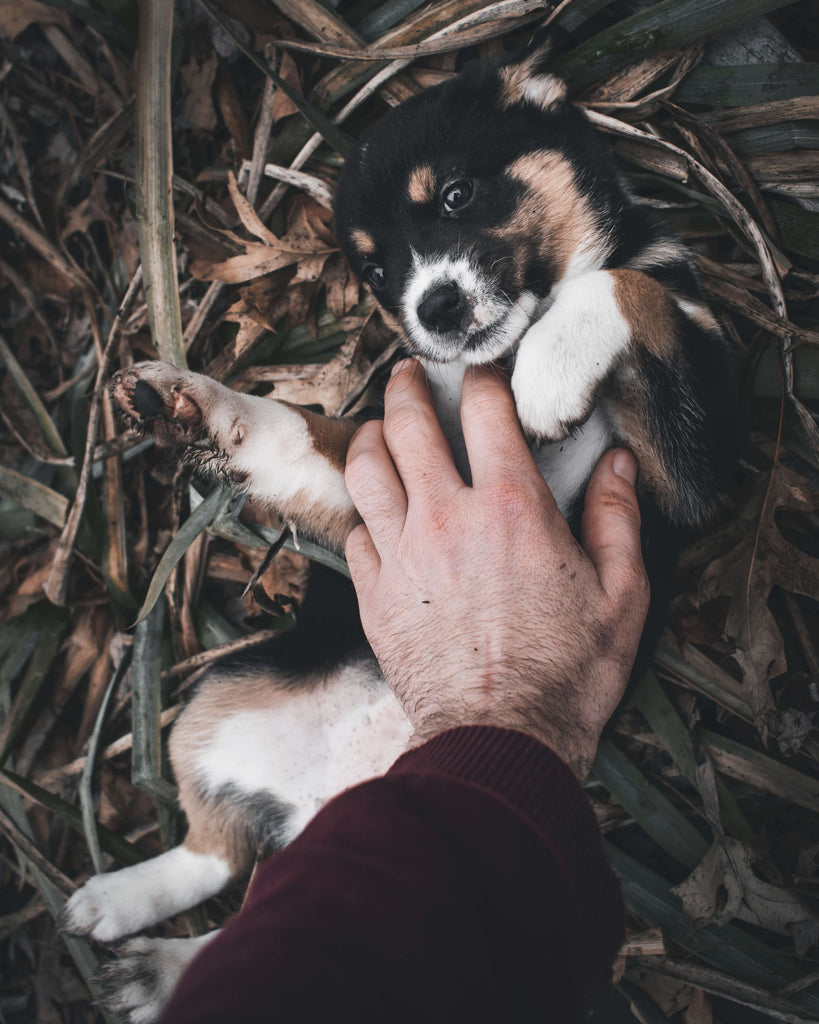
Are Dogs Ticklish?
According to neuroscientists, there are two evolutionary reasons that humans are ticklish. The first is to alert us to the presence of something foreign on our skin, such as a crawling bug. The second is to enhance social bonding. When we bring these pieces information to the world of canines, it stands to reason that both functions are important. But are dogs ticklish?
Dogs tend to attract creepy crawlers and need to remove them from their skin or coat before they get bitten or stung. More importantly, dogs are social creatures, and bonding is a huge part of the relationship between a dog and her human! We're here to shed some light on this question and we think what we have to say will bring a smile to your face!
What Does it Mean to be Ticklish?
In order to answer the question of whether or not dogs are ticklish, we have to consider what actually happens to the brain and body when tickling occurs. First, let's rule out the act of mimicking a ticklish reaction. What we're referencing, here, is a verbal reaction to touch that involves laughing and contracting the body in spite of the fact that the touch doesn't, in fact, tickle. We see little kids do this often and it's a form of game-play that, like real tickling, facilitates bonding! However, what we'll call "true" tickling requires an involuntary reaction to touch.
There are two types of ticklish feelings and they're known as gargalesis and knismesis.
Gargalesis
Gargalesis is the kind of tickling that usually results in laughter. It has to be induced by another person and stems from the moderate pressure applied over and over to a sensitive area. Gargalesis is the sort of tickling associated with social bonding. However, it stands to reason that knismesis, when executed purposefully and pleasurably, can also facilitate social bonding!
Knismesis
Knismesis doesn't often result in laughter but instead creates a sensation of itchiness. This may not sound pleasurable, but it oftentimes is! Knismesis is often brought on by a light touch accompanied by movement across the skin. When knismesis occurs, what you're experiencing is neurological stimulation. The sensation created by touch creates a nerve impulse that is sent to the spinal cord. This can cause shuddering either on the area that is being touched or up the spine. Think of the feeling you're describing when you say, "That gave me chills!"
The Pleasure Factor
If you're not happy with the scientific explanations for tickling, you could go with a looser definition! If social tickling elicits laughter and even joy, perhaps you could consider tickling any touch that elicits similar reactions. For example, think of times when someone has scratched your back or stroked your hair. This sort of touch may not make us laugh, but it does feel pleasant! To some extent, this kind of touch could fall into the category of knismesis, although it is not always light.
Are Dogs Ticklish?
Studies have found that a few animals, including chimps and rats, experience gargalesis the way that humans do! They may not "laugh" the way that we do, but they react in a similar manner. Dogs, however, have not been found to experience gargalesis. However, dogs have been found to experience knismesis! In other words, dogs are, in fact, ticklish!
How Do Dogs React to Tickling?
As silly as it would be to hear a dog laugh, we all know that isn't going to happen. (Although, we've met a few huskies that get pretty close!) That being said, dogs do react to tickling!
The most common reaction we hear about from dog owners is the kicking foot or "scratch reflex." The scratch reflex is an involuntary kicking motion dogs make with a single foot when you find a really good spot to scratch. Sometimes, it seems like they're trying to assist with the scratching by actually aiming this motion at the spot you're petting. Other times, the leg just sort of dances around aimlessly!
Dogs have a number of ways of showing that they're enjoying your touch! They'll stretch or roll over to for a belly rub. Some will do a big shake after you stop petting them which is a way of putting an end to the feeling of having chills. If you're really lucky, you may just get the tail wag and big smile! Some of the contestants from our Next Top Dog Model competition do a fantastic job of demonstrating that wonderful doggy grin.

Benefits of Tickling Your Dog
As dog owners, we do our best to maintain our dog's physical wellbeing. We buy them healthy food, we get them checked up on a regular basis, and we keep them active. If tickling can boost moods and make social bonding easier, then we should consider ticking a major part of mental and emotional wellbeing.
If we consider a ticklish dog one who feels and shows pleasure upon being touched, there are a number of reasons to practice this with your dog! We often assume that all dogs love human touch but we have to remember that some pups have been through unpleasant experiences. They may need some extra help in this department!
If your dog struggles with fear, anxiety, or aggression, practicing tickling may help them to become more comfortable with human touch. Not only will this improve your relationship with them but it will make it easier for vets, groomers, and pet sitters to interact safely and comfortably with them.
How to Help a Dog That Doesn't Like Tickling
If your dog struggles with being touched, there are a few ways you can encourage a positive response to tickling.
Create a Stress-Free Environment
Nervous dogs are often over-stimulated by sound and movement. They may perceive sound and movement as a threat and go into defensive mode. In this state of mind, they are more likely to cower or snap if you try to touch them. Before you try tickling a nervous dog, bring them to a quiet space with few distractions. This could be a bedroom, a living room, or any other indoor space that isn't occupied by other pets or people.
Start With Slow, Gentle Movements
You want a nervous dog to find your movements predictable. Don't tickle them until they've given your hand a sniff and know where your hand is going. Start with their chin or side of the face so they can keep on eye on your hand. Once they start to relax, run your hand slowly and without too much pressure on their side or back. They may not feel ready to expose their belly yet since this puts dogs in a vulnerable position.
Look for Signs of Ticklish Spots
Keep an eye out for the signs of ticklish spots like the reactions we listed above. If there seem to be certain spots that cause, for example, the scratch reflex, spend some extra time petting those spots. You're building up their association of petting or tickling with happy feelings!
Make "Problem Areas" Less of a Problem
When we discussed knismesis, you probably thought of a few times where you've had that reaction and didn't like it. For example, some people hate being touched on the bottoms of their feet because the feeling of knismesis is uncomfortable for them. A lot of times, when dogs don't like certain spots to be touched, they're experiencing a similar reaction. In fact, many dogs don't like having the bottoms of their feet touched, either! However, groomers and vets will have to touch these spots from time to time and it's a good idea to make your dog more comfortable with this. Try to reward system. Give them a treat when they let you touch the pads of their feet or other "problem areas" without pulling away. Encourage this complicity with a positive vocal response ("Good girl!") and a pet on the spot they seem to enjoy the most.
Tickling Tips: What Not to Do
When you're tickling your dog, don't misinterpret their reaction. Unlike people, dogs are not going to contract their bodies or pull away from your touch when they're tickled. If they do this, you may have found a spot that is causing them pain. Alternatively, you may have discovered one of their "problem areas" and will need to do some work before you can expect them to be comfortable with this kind of touch.
Ticklish Dogs are Happy Dogs
Are dogs ticklish? The answer is yes! Better still, a ticklish dog is one that enjoys being touched and feels confident in their ability to bond with people.




























